Depending on the use case and performance requirements, it may be worth considering an alternative to Xen. We have listed five interesting solutions to replace the Xen hypervisor, including their pros and cons.
The virtualization alternative
Migrate to the IONOS Cloud with ease. Up to €5,000 in migration assistance. Support from IONOS experts included.
Maximum security
Excellent price-performance
Lift-and-shift migration
Overview of the best alternatives to Xen
| Hypervisor type | Architecture | Host OS | Guest OS |
|---|---|---|---|
| Xen | Type 1 | x86, x86_64, ARM | Linux, Windows |
| KVM | Type 1/Type 2 Hybrid | x86, x86_64, System-z | Linux |
| VirtualBox | Type 2 | x86, x86_64 | Linux, Windows, macOS, Solaris |
| Xvisor | Type 1 | x86, x86_64, ARM, RISC-V | Linux |
| QEMU | Type 2 | x86, x86_64, ARM, RISC-V | Linux, Windows |
| UTM | Type 2 | x86, x86_64, ARM, RISC-V | macOS, iOS |
The alternatives to Xen compared in this article are all open source, that is to say under free license, which makes them particularly popular with administrators and developers. One of the main distinguishing features is the type of hypervisor used for virtualization:
- THE type 1 hypervisorsalso called hypervisors “ bare metal ”, are executed directly on the host system hardware.
- THE type 2 hypervisors run as a software layer or application on the corresponding host system, which is why they are also known as “hosted” hypervisors.
KVM
KVM (Kernel-based Virtual Machine) is Linux-based virtualization software that has been part of the Linux kernel since version 2.6.20. Red Hat's software can certainly be used as a type 1 hypervisor via a custom installation like Xen. However, operation as an abstract application (type 2) is intended by default, which is why KVM is often classified as hybrid hypervisor solution. Possible guest systems you can run with this Xen alternative are, among others, BSD (Berkeley Software Distribution), Solaris, Windows, ReactOS and macOS.
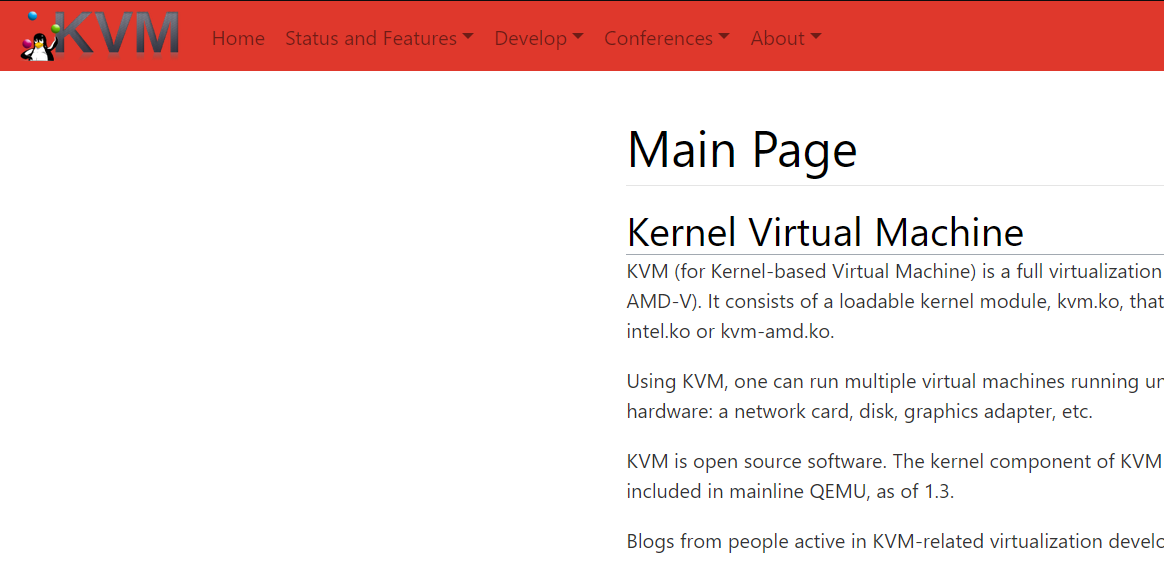
Direct integration into the Linux kernel allows KVM to regularly receive security and performance updates. Generally speaking, the hypervisor stands out with an excellent security package: a combination of SELinux and sVirt (secure virtualization) ensures the security and isolation of your virtual machines. By implementing KVM on one of the supported Linux distributions, such as RHEL, you can expand the palette of functions. This allows you to improve system performance or exchange resources between guest systems.
| Benefits | Disadvantages |
|---|---|
| ✓ Direct Linux bug fixes and updates | ✗ Complex setup process |
| ✓ Excellent security package | ✗ Requires systems with hardware support for virtualization |
In our “Xen vs KVM” article, we take a closer look at the similarities and differences between these two virtualization applications.
VirtualBox
VirtualBox is another alternative to Xen, managed since 2008 by the American company Oracle. Originally, this virtualization software was developed by the company InnoTek Systemberatung GmbH, in Germany. Unlike Xen, VirtualBox is a hypervisor type 2 which works on Windows, Linux, macOS and Solaris platforms. As for guest systems, the application has practically no restrictions: in addition to Windows and Linux systems, various editions of Solaris and BSD are also possible as hosts. VirtualBox thus offers greater flexibility and the possibility of virtualizing the deskwhich is not the case for Xen.
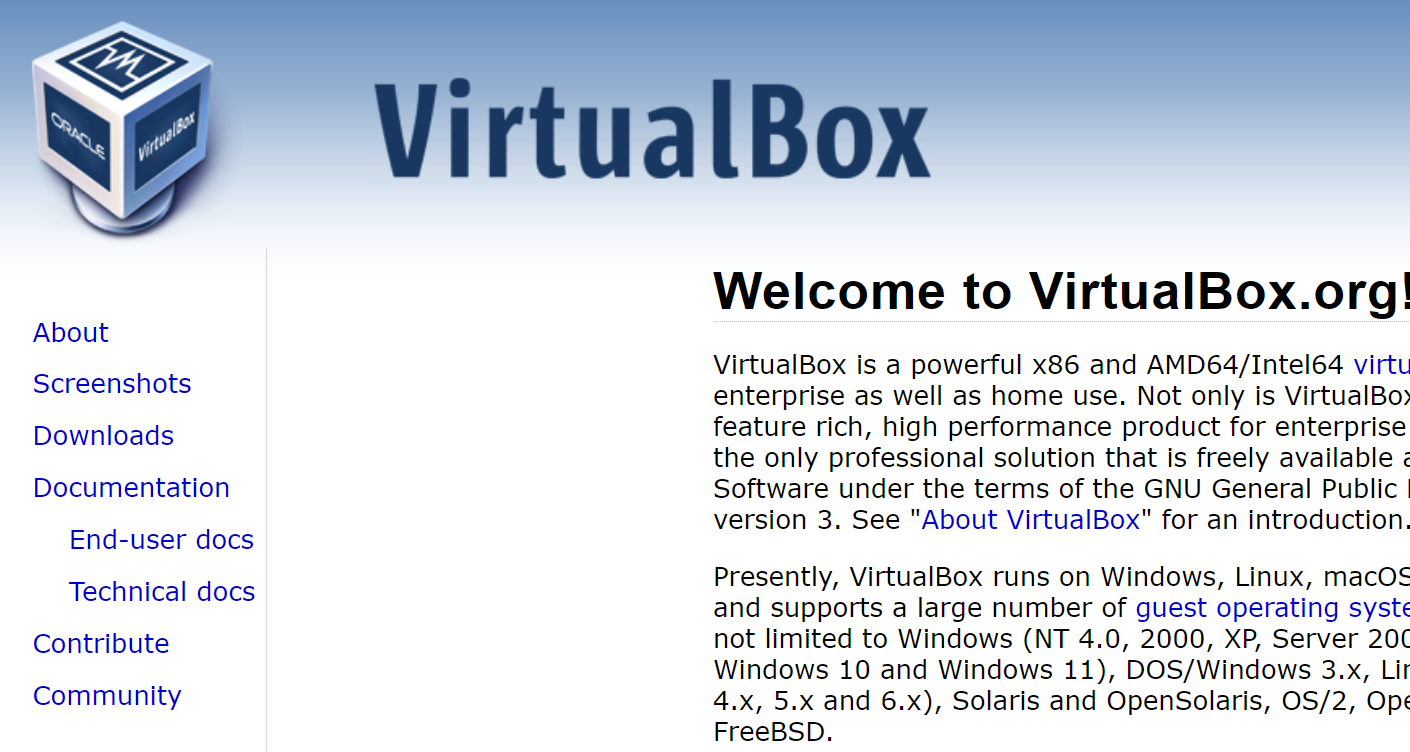
The migration of virtual machines (VM or virtual machines) created is less flexible: in VirtualBox it is not possible to move VMs between physical hosts without downtime during live operation. There migration requires a manual process, this is why the virtualization application is less suitable for projects that require very high availability. An obvious advantage of Oracle's software is its ease of use for beginners. User interface chart makes managing virtual machines child's play, even for the uninitiated who otherwise have little to do with command line input as in Xen.
| Benefits | Disadvantages |
|---|---|
| ✓ Well suited for desktop virtualization | ✗ No direct access to hardware resources possible |
| ✓ Great ease of use | ✗ No live migration of VMs possible |
Xvisor
Xvisor (eXtensible Versatile hypervISOR) is, like Xen, an open source type 1 hypervisor which is distinguished by its very high flexibility and portability. This is reflected in the large number of architectures supported by Xvisor: in addition to x86 and x86_64, ARM and RISC-V are among the supported CPU architectures. Xvisor source code can be ported to any 32- and 64-bit platform, as long as a Paged Memory Management Unit (PMMU) and a GNU C Compiler (GCC) port are available. This alternative to Xen mainly focuses on complete virtualization and therefore allows a large number of unmodified guest OSes. For the host system, however, we are linked to a Linux distribution.
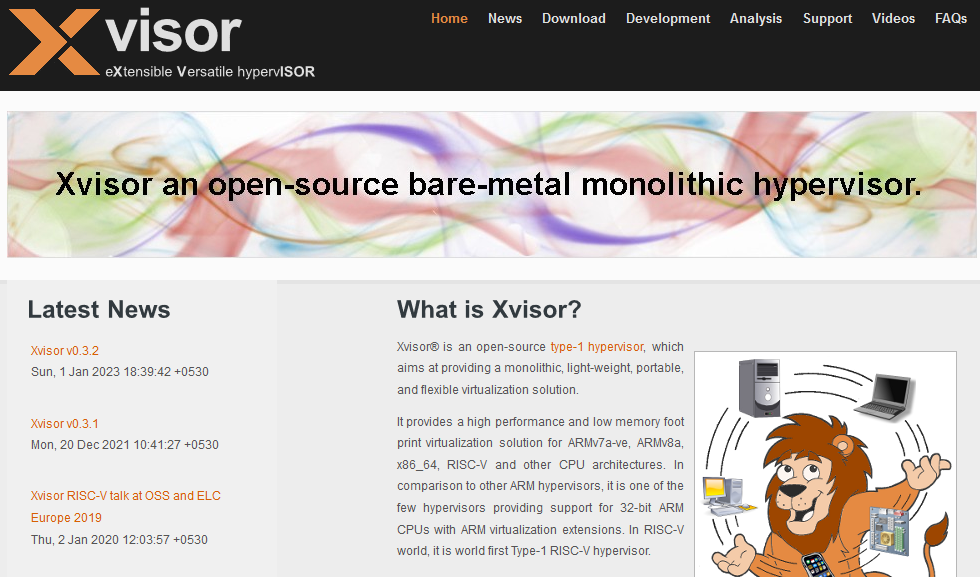
Virtualization with Xvisor is efficient and saves disk space, which can also be explained by the fact that the software does not use any security extensions. Paravirtualization as in Xen can be activated as an option, as long as the architecture used allows it.
| Benefits | Disadvantages |
|---|---|
| ✓ Supports a large number of architectures | ✗ No security extensions |
| ✓ Virtualization saving disk space |
QEMU
QEMUshort for Quick EMUlator, is an alternative to Xen that can be used either as an emulator or a type 2 hypervisor. Used as a hypervisor, QEMU achieves close native performance by running guest code directly on the host CPU. However, the virtualization software must use either the Xen hypervisor or the Linux KVM kernel module for this purpose. Compared to Xen, however, QEMU offers a much broader ecosystem and supports a significantly larger number of architectures and operating systems. This makes the program suitable for many uses, including development, control and operation of existing software.
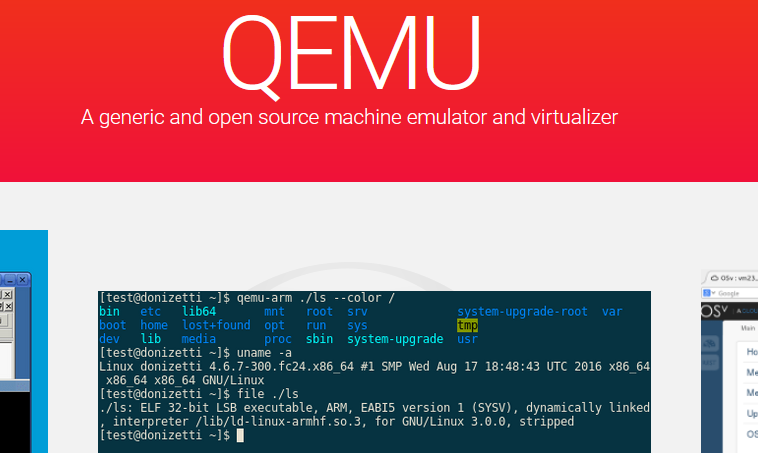
As a Type 2 hypervisor, QEMU does not have direct access to hardware resources, which is why it is not quite on par with Xen in terms of performance. On the other hand, the tool offers a much more user-friendly interface thanks to a graphical user interface. QEMU has a large and active community which ensures regular updates. This virtualization solution has also been integrated with many other virtualization solutions and Cloud platforms.
| Benefits | Disadvantages |
|---|---|
| ✓ Supports a multitude of architectures | ✗ Depends on Xen or KVM hypervisor |
| ✓ Suitable for various projects | ✗ Lack of VM isolation |
UTM
UTM is a virtualization solution for emulating various operating systems on your device Mac, iPhone or iPad (from iOS 11). The software notably uses Apple's hypervisor virtualization framework to run ARM64 operating systems on devices equipped with an Apple Silicon processor with near-native performance. On older Macs with an Intel processor, you virtualize guest systems with x86 and x86_64 architecture if necessary. Additionally, the hypervisor supports various other architectures such as ARM32, MIPS, PPC, and RISC-V. This alternative to Xen is therefore an excellent choice, for example, if you want to run Windows systems on your Mac or iOS mobile device.
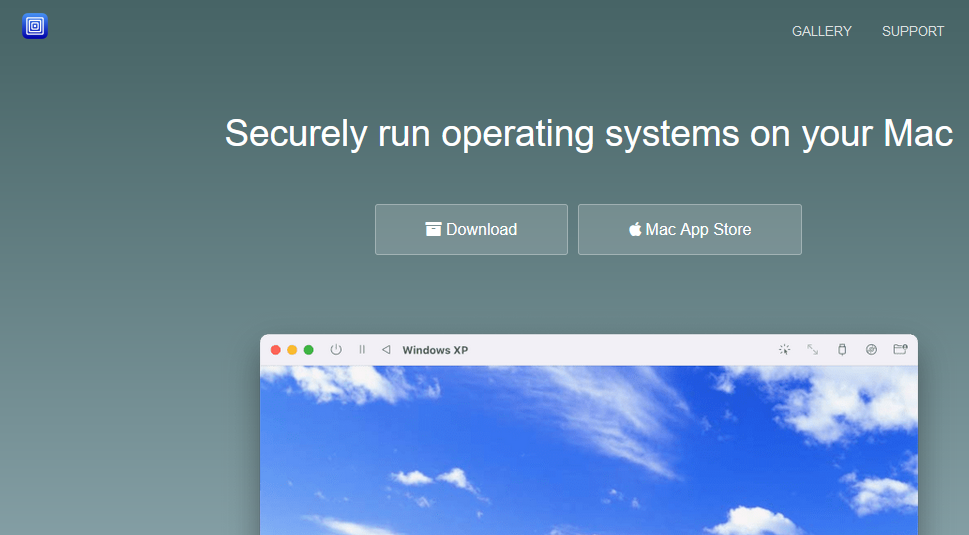
The basis of UTM is the already presented QEMU solution. This is certainly very flexible and efficient, but like Xen, it is not easy to master for beginners: due to the multitude of command line options and flags, these two options are difficult to set up and to configure against UTM. The virtualization solution was therefore developed with the aim of offering users the flexibility of QEMU while also being friendly as possible.
| Benefits | Disadvantages |
|---|---|
| ✓ Supports a large number of architectures | ✗ Rather poor performance on most guest systems |
| ✓ Great ease of use |
Migrating to the Cloud with IONOS is an excellent virtualization alternative. Choose IONOS's secure, high-performance infrastructure, open source and without vendor lock-in, and give your business a reliable foundation!




